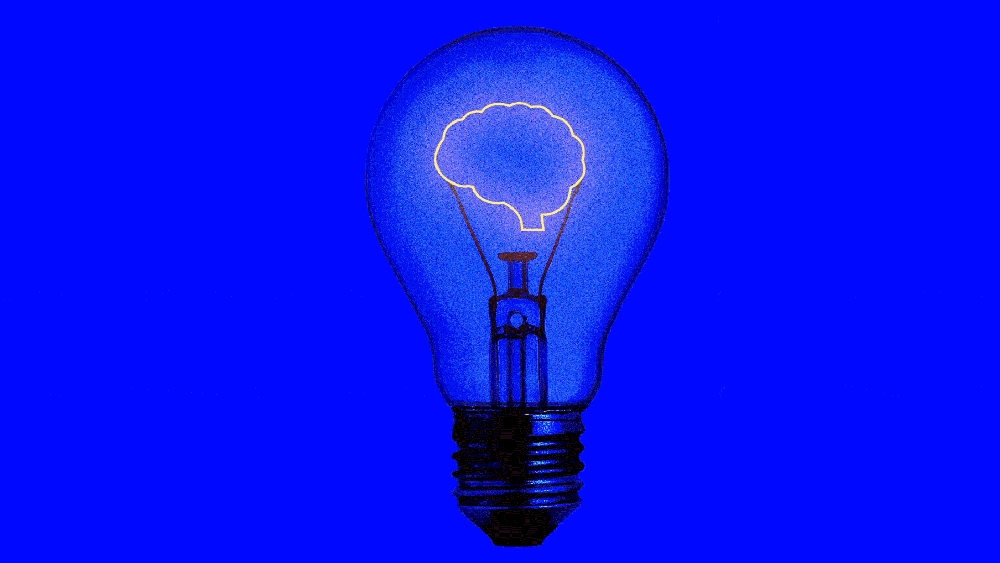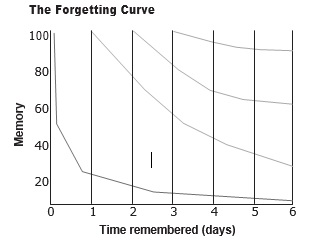
The Question
“What is the relationship between creativity and learning?”
I get that question from many of the people I talk and consult with and usually babble some vague cliche about you can’t have one without the other, and that real learning depends on creativity. While that’s true the real answer is more complicated.
It’s not because we don’t have a good idea about the first part – the learning process – but because the second part – the creative process – is still a mysterious unexplored territory. Like the old mapmakers would say about uncharted waters “Beware! Here there be monsters!”
Here’s what we know about the first part.
Rote — The First Type of Learning
There are two types of learning, rote and real. Rote is all about someone feeding the employee-cum-student with a spoonful of knowledge or know-how. The student eats, digests, and literally regurgitates that information back on a test and gets graded. (Actually, it’s the teacher who is being graded for their performance in the knowledge transfer since the student’s performance is rarely tested in the real world.) Rote learning has been the default for delivering and measuring learning for well over 100 years, starting in the formal school systems and carried over into the workplaces of the world. It is very structured, neat, linear, and inhibited.
Rote learning is all about recovery.
Rote learning is by-the-book learning. It’s bound by rules, guidelines, regulations, procedures, facts, and figures. It is designed to be shunted into short-term memory, regurgitated quickly, measured against the right answers, and just as quickly forgotten. And that is the biggest problem with this approach — The Forgetting Curve.
The Forgetting Curve
We know from research on the process of forgetting – a critical part of the learning process – that the rote approach is not effective. As far back as 1885, during the early part of the industrial economy, researchers wondered why training did not immediately meet the expectations for improved performance. Hermann Ebbinghaus extrapolated the hypothesis of the exponential nature of forgetting. The following formula roughly describes it: R = e – S / t, where R is memory retention, S is the relative strength of memory, and t is time.
A typical graph of the forgetting curve shows that we tend to forget as much as half of what we remember of the newly learned knowledge in a matter of days or weeks unless we consciously review and use what we learned.

Yet we have persisted for well over 100 years employing rote learning as the primary way to learn.
Research at IBM in the late 1980s, and in many other companies since then, showed that a disproportionate amount of learning—anywhere between 70 and 80 percent—takes place in context, on the job and in the course of your work. The implications are eye-opening. If rote-based programs account for only 20 to 30 percent of learning (if learners remember that much), then employees are entering the workplace with 70-80 percent left to try and remember and relearn. When these events are, for example, focused on compliance or safety procedures, it’s unsettling to imagine the results when we send people back to work having learned only 20-30 percent of what they need to know, which could endanger their lives and the lives of others.
How to Waste $289 Billion Dollars
Rote-based programs are the primary method of training. In 2017, almost 50 percent of the training hours were rote-based, including actual classroom and virtual classroom-in-a-box. When you factor in the results of the forgetting curve, where up to 80 percent is forgotten, the numbers add up to an incredible waste of time and money. Consider that $362 billion was spent on learning and development activities in 2017. This means that 80% of it or $289 billion of that was never fully realized and translated into improved performance. And yet I keep hearing it over and over. The answer to a problem is always more training.
Real — The Second Type of Learning
Real learning is the opposite of rote. Real learning is uninhibited learning. It’s freeform, creative, messy, unconstrained, and improvisational. You learn by continuously exploring, inventing, failing, creating, and then succeeding. Failing is hardwired into the process of real learning. Real learning—the kind of aha moment signaling that the brain has connected the dots—is a wonderful and amazing mystery. It involves long-term memory, synapses, endorphins, and encoding. Real learning is a result of those accidental and serendipitous moments. That’s what we mean by uninhibited. The process starts when your mind adopts new information and then adapts it (in a sense relearns it) under a constantly changing set of circumstances.
Real learning is all about discovery.
Every time—and we mean every time—you learn to do something new, you have done so by trial and error. Genius short-circuits the process. Talent gets you there quicker, but the process of learning is the same: trial and error. The latest neuroscience findings show us that the brain aggregates memory and builds trial and error into the way to do something. It appears that the “failed” trial and error cells are held back, while the “successful” trial and no error cells are moved to the front of the line. The current theory is that the old trial and error cells get recycled.
Enter Creativity
Creativity is a critical part of the real learning process in which knowledge and know-how are adapted in the real world. Here are just two examples.
- I work in a supermarket at the deli counter and go to a class to learn the basics of handling meat and cheese. Every time a new customer comes to the counter with a different request, I need to creatively adapt what I learned in the class to provide service. And I need to do this every time thereafter when I serve a new and different customer. The overall impact is that all the learning, adapting and relearning adds up over time to a become level of mastery.
- I learn how to play golf and, as a key part of my game used the putting green to learn to grip my putter the right way, gauge the distance to the hole, measure the energy in the stroke, move my body correctly, read the green, line up the shot. and putt. Every time I go out and play a round of golf, the conditions are different and I end up in a different place on the green. I need to adapt what I have been constantly trying, failing, succeeding and relearning about putting to make the putt.
That process of adaption is a creative process. The opposite is true and telling as well. In a situation in which an employee is learning by rote, if they raise their hand and say they have an idea – often a creative approach to whatever they are learning – they are told to stay focused on the material being presented. It starts the first day of the first year at school when the natural creativity that kids have is extinguished to support the fact that the schools and teachers are forced to meet state and federal standards as proven by the summative tests kids take at the end of every year.
… And The Answer Is …
So creativity is the driver for real learning. If we do not enable and support creativity we kill real learning. When we focus on recovery instead of discovery real learning has no chance. And that’s the answer to the question.
Stop Killing Creativity
Here’s a short animated video that shows you how creativity and real learning dies a slow and painful death.